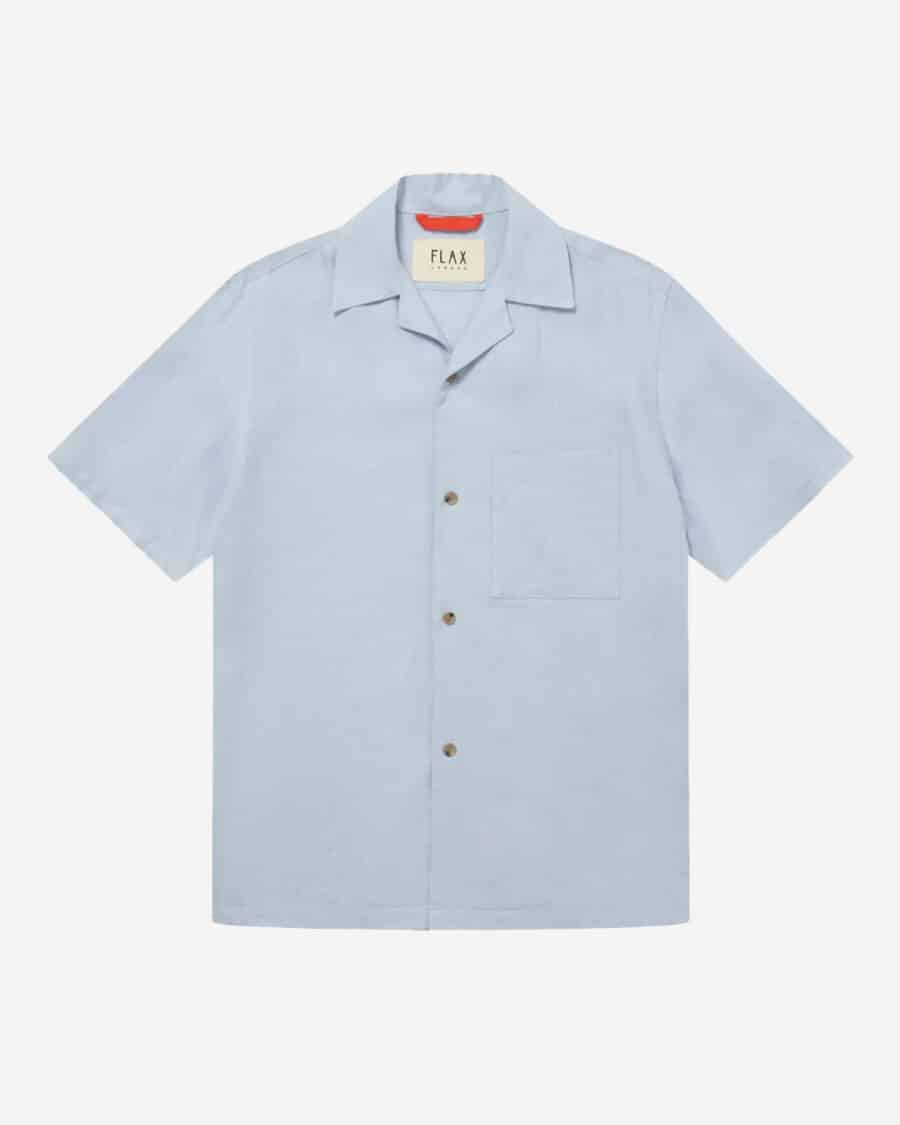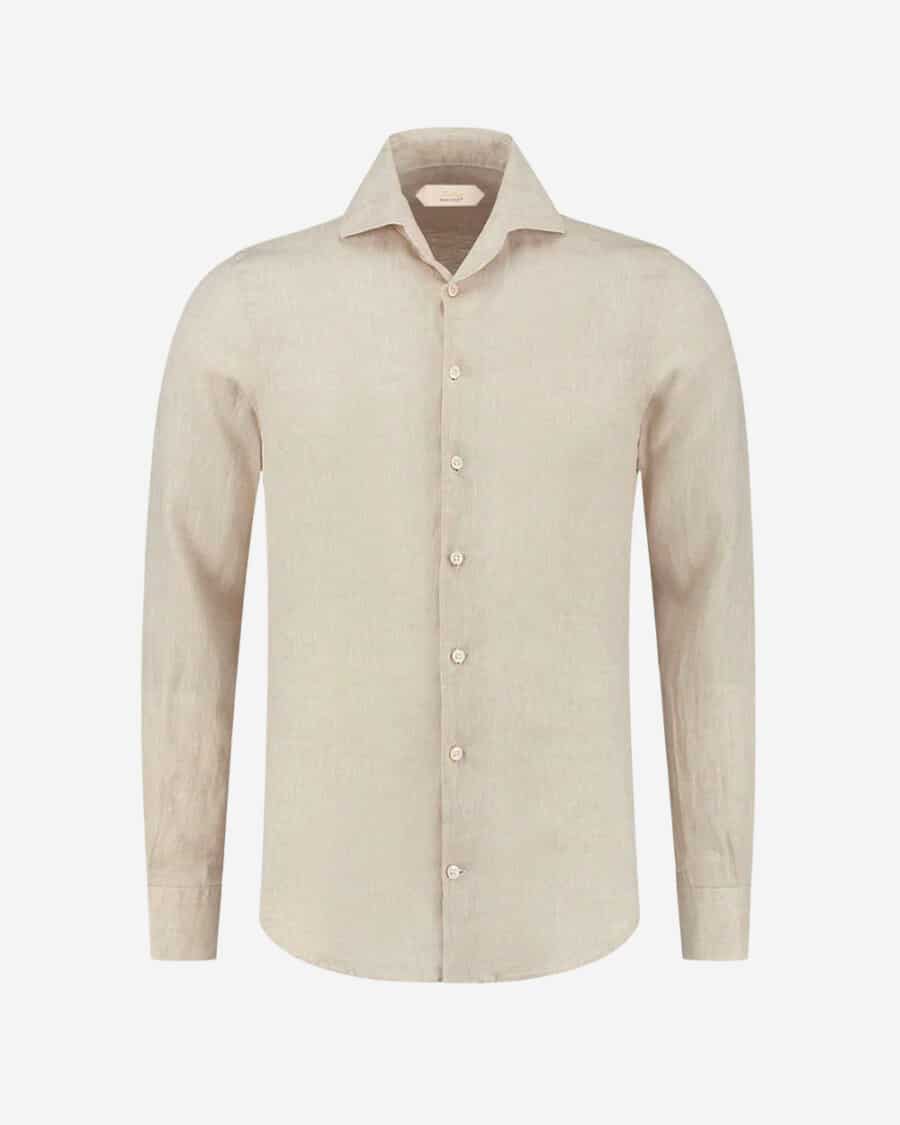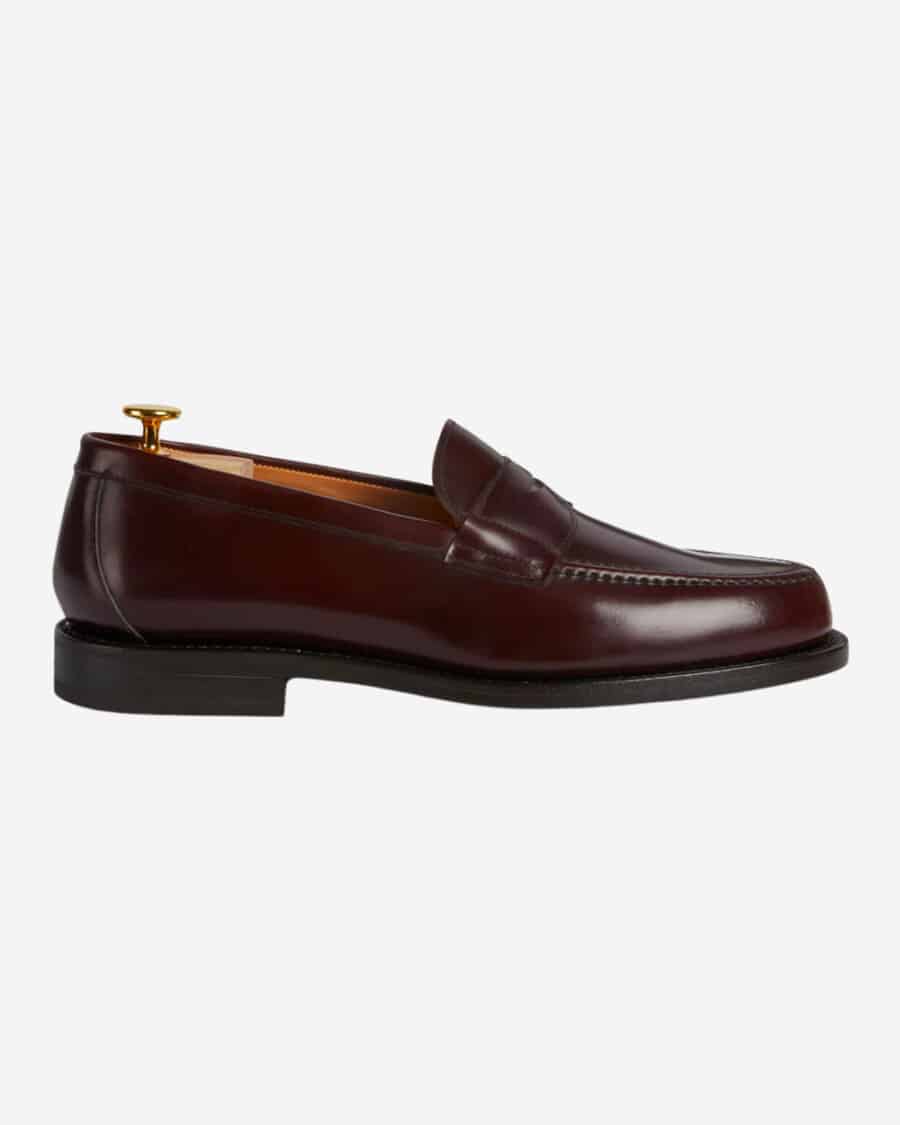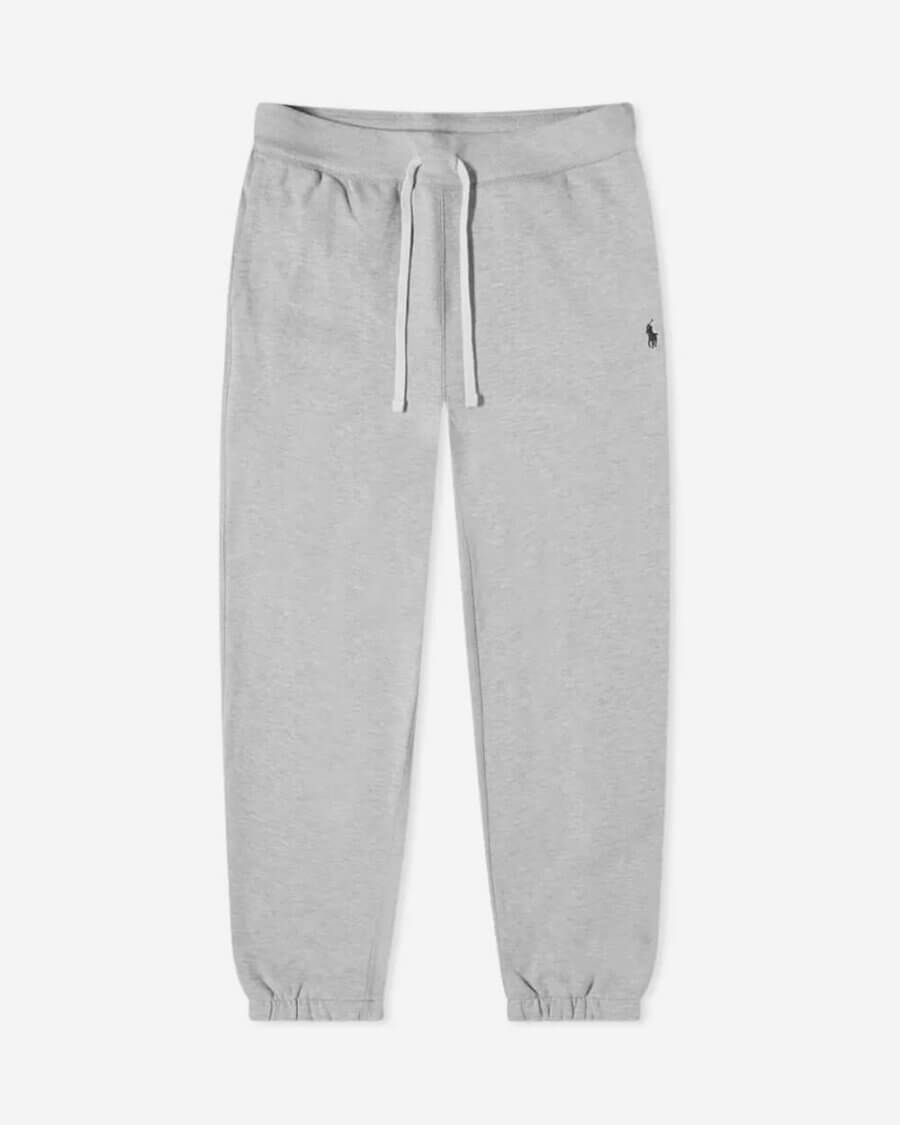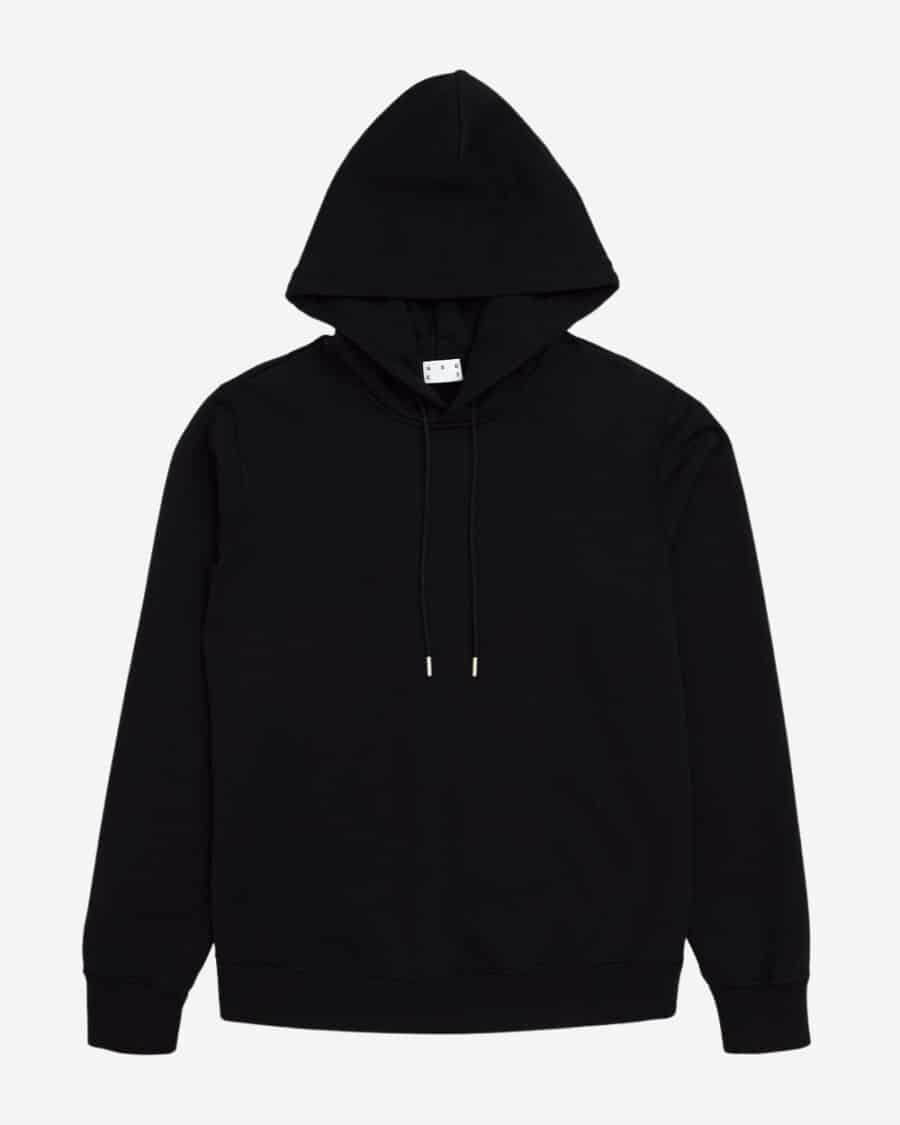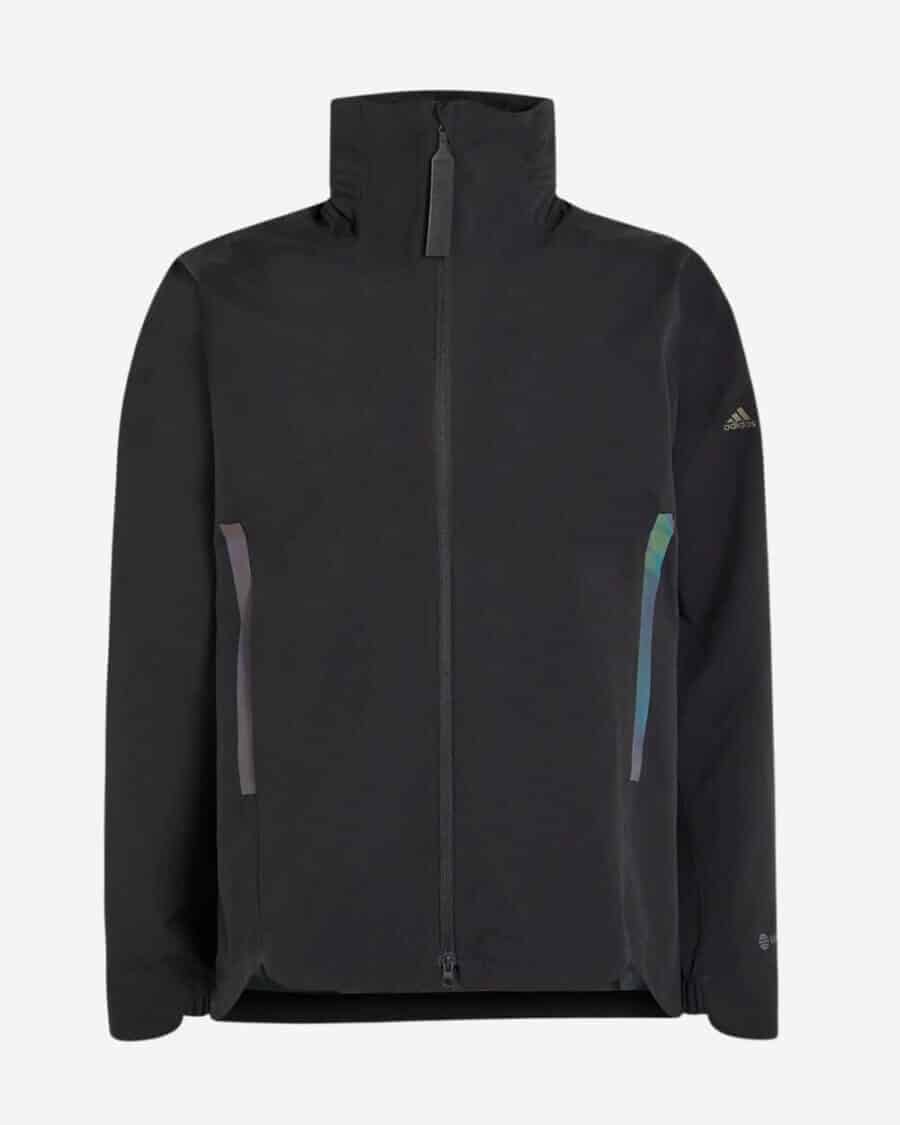The Ultimate Men’s Minimalist Wardrobe: 33 Capsule Pieces You Need
Streamline your style and achieve more with less by building yourself a curated collection of minimalist pieces that can do it all.
How much time do you spend thinking about what to wear? Given that you’re reading this article, it’s probably safe to assume the answer is, “a lot”. But imagine for a moment that you didn’t have to give any thought to your everyday outfits.
What if you could simply reach into your wardrobe and pull out a random selection of clothing, safe in the knowledge that it would look great? This is the goal behind building a minimalist capsule wardrobe.
The idea is to whittle clothing options down to a core selection that can be endlessly mixed and matched, catering for every conceivable situation and social setting with as few pieces as possible.
Building your own minimalist wardrobe will help you to streamline your style and increase your outfit options while simultaneously decreasing clutter. It will enable you to do more with less, reducing your consumption and, by extension, your carbon footprint too.
Interested? Here’s how to do it yourself.
What Is A Minimalist Wardrobe?

First things first: if you’re going to create your own minimalist wardrobe, it’s vital to understand exactly what it is you’re trying to create.
A minimalist wardrobe can best be described as a tightly curated collection of clothing that covers all bases. The colours should be neutral, the pieces should be versatile and well made, and each and every garment must be simple, timeless and classic.
The idea is to make it as easy as possible to look well turned out while operating outside of the ebb and flow of fashion trends. Think pieces that’ll still be relevant 50 years from now, as opposed to ones that’ll be on the sale rail come the beginning of next season.
Simplicity is one of the main benefits of this stripped-back approach to style, but another is sustainability. By buying better quality clothes and fewer of them, you can lessen your impact on the environment.
This is down to the fact that good-quality, basic clothing will last longer and be much more versatile than fast-fashion garments. Ultimately, it’ll need to be replaced less frequently.
Minimalist wardrobe: general tips
Colours
It’s no good having a wardrobe stocked with simple, timeless pieces if they’re all in day-glo colours and garish patterns. Garments should complement one another, which means keeping the colour palette simple and avoiding anything overly eye-catching.
Neutrals and earth tones work best, or if you must add a splash of colour, opting for pastel shades is a subtle way to do so.
Navy and grey are both extremely versatile too, particularly when it comes to casualwear and tailoring.
When building out your own wardrobe palette, remember to keep in mind your skin tone and opt for the most flattering colours.
Fabrics
A good minimalist wardrobe will incorporate a range of fabrics. It’s important to take season into account when deciding on materials, with thicker, heavier fabrics being better suited to fall and winter, and lighter, airier fabrics more suitable for warm weather.
You can also use different fabrics to add texture to your looks. This is a clever way to bring simple outfits to life, allowing you to create depth and focal points without bright colours, obnoxious branding or loud patterns.
Adaptability
Cohesiveness is the whole concept behind the minimalist wardrobe so it’s vital that the pieces are adaptable. You should be able to mix and match using the same small selection of basic garments to form countless different outfits.
Casualwear should combine with tailoring, every top should go with every bottom and the footwear should work across the board.
The more versatile each garment in your minimalist wardrobe is, the more use you’ll ultimately be able to get out of it.
Quality
If you’re going to be operating with fewer clothes, the ones you have will need to be of superior quality. This is one of the key requirements of every piece in a minimalist wardrobe: it needs to be well made, in premium fabrics and built to stand the test of time.
Quality over quantity is the name of the game.
Timelessness
It can be tempting to get sucked into the latest trends, but doing so won’t do anything for your style long term.
Longline tees, bushy beards and skinny jeans are all examples of relatively recent trends that history is already judging harshly. Opting for simple, timeless pieces will keep you on the right side of stylish and ensure you can look back on old photos without cringing yourself inside out.
Plus, buying timeless pieces means you can keep wearing them longer. That’s yet another way that building a minimalist wardrobe can reduce not just your outgoings, but your carbon footprint too.
Men’s minimalist wardrobe: the key pieces
Below you will find the 33 pieces every minimalist wardrobe should include. That said, it’s not gospel – if you prefer a denim shirt to a flannel shirt, or you have little need for tailoring, feel free to make considered alterations depending on your lifestyle and preferences.
casualwear tailoring outerwear summer staples footwear loungewear activewear
Casualwear
The white T-Shirt
A few good-quality white tees will form the backbone of your minimalist wardrobe. They’re blank canvases upon which almost any outfit can be painted.
Wear one on its own in the summer months, layer one under an overshirt or jacket on cooler days, or wear one in place of a shirt with tailoring to give your regular suit a contemporary edge.
The Oxford shirt
If you’re going to own only one type of shirt, make it an Oxford-cloth button-down. It’s a smart-casual staple that can be dressed up or down with ease and looks great with almost anything.
Wear it open over a T-shirt for a casual look, or team it with an unstructured blazer and chinos for something a little smarter.
The flannel shirt
King of casual shirts, the flannel is soft, cosy and comfortable. It’s ideal for the colder portion of the year, and provides a great way to introduce some subtle pattern into your outfits.
Checks are traditional, but you can get plain flannels too if you’d prefer to keep things simple.
Either way, it’s a super-versatile piece that can be worn across the entire smart-casual spectrum.
The polo shirt
Sometimes a shirt is too much and a T-shirt is too sloppy. That’s where a polo shirt comes in. The stretchy pique fabric is airy and comfortable while the collar adds a touch of smartness.
It’s perfect for dressing up casual summer attire like shorts and sneakers, or can be worn in place of a button-up for a more relaxed take on tailoring.
The knit
Whether it’s a cardigan, a crew neck sweater or a turtleneck, some form of knitwear is essential for fall and winter layering. In a fine-gauge knit, these pieces are surprisingly versatile and can be worn either on their own or as part of a layered look.
Lambswool and merino are great, but go for cashmere if you can afford it. It’s incredibly soft to the touch and can be used to add a subtle hint of luxury to outfits without making a song and dance of it.
The sweatshirt
A simple crew neck jersey sweatshirt is another Swiss army knife of a garment that will likely see action all year round. Grey, black and navy are the most versatile colours and will give the greatest degree of wearability.
It’s also a good idea to go for a pre-shrunk loopback cotton. This way you can avoid any nasty surprises following the first wash.
The selvedge jean
Jeans are the world’s most popular casual pant and there are endless variations around. But really, there is only one style you need – and that’s a pair of classic selvedge jeans in raw indigo.
Selvedge tends to mean quality, which in turn means longevity, and the dark colour is casual but more than capable of rubbing shoulders with smarter pieces too.
The chino
Preppy and versatile, a straight-leg chino is the ultimate smart casual trouser. Khaki pants go with anything short of a dinner jacket and are more comfortable than a jean too.
They’re an excellent everyday legwear option and something that no wardrobe, minimalist or otherwise, should be without.
Tailoring
The navy wool suit
There’s nothing a simple navy two-piece suit can’t do. Weddings? Check. Office? Check. Interviews? Check. Date night? Check. Split it in two and wear it as separates? Check and check.
In this modern age, it could be argued that a man only really needs one suit – and this is it. Some might say a dinner suit is a must but be honest, how often do you really find yourself at a black tie event?
A navy suit will do 95% of formal jobs; for the other 5%, just rent a tux.
The unstructured blazer
Soft tailoring is relaxed yet sophisticated and great for dressing up without looking corporate. To nail it, the first thing you’ll need is an unstructured blazer in a neutral colour.
This can be paired with smart or casual legwear and is perfect for dressing everyday looks up in a flash.
Cotton-twill fabric is the best way to go, offering the greatest degree of seasonal versatility and it’s nice and hard wearing to boot.
The wool trouser
A textured wool trouser will see you through the colder portion of the year in style. It should fit like a regular suit trouser and can be with or without pleats.
In terms of colour, some variation of grey will offer you the most bang for your buck as there’s not much it doesn’t go with and it works with both formal and casual attire.
The dress shirt
A well-fitting dress shirt is the foundation upon which to build your formal outfits. It should be crisp white and made from poplin cotton.
If you can afford it, we’d suggest getting a shirt tailormade. An off-the-peg suit can be altered relatively cheaply but costs a fortune to have made to measure.
A custom shirt on the other hand is a relatively inexpensive way to get something that’s made just for you and fits like a glove from the moment you get it home.
Outerwear
The winter coat
Every man needs one substantial coat to see him through the winter in style. It should be roomy enough to layer underneath, warm enough that you don’t necessarily have to, and versatile enough to throw on top of anything without giving it a second thought.
Styles vary a lot, so personal preference comes into play, but a classic silhouette like an arctic parka or a puffer jacket will always be a solid option.
For maximum wearability, go for something black.
The overcoat
An overcoat is tailoring’s answer to a winter coat. It’s sharp, but also roomy and unstructured, making it perfect for slinging over a suit jacket without interfering with the shoulder pads.
But a good overcoat isn’t exclusively to be worn with tailoring. This is where you can experiment with high-low dressing, using this elegant tailored coat to whip laid-back outfits into shape.
The waterproof shell
If your local climate is unpredictable, a technical waterproof is an absolute must. It’s designed to deflect the worst of the weather without making you overheat inside it.
The best material for this is Gore-Tex, which allows water vapour to escape from within while blocking water droplets from entering from the outside.
Sure, it may not be the most stylish item in your minimalist wardrobe, but it’s a must if you want those pieces underneath to remain dry.
The overshirt
Somewhere between a shirt and a jacket, an overshirt is one of the most versatile four-season garments a man can own.
Go for a worker-jacket style with three patch pockets to the front and choose a colour that’ll complement the rest of your wardrobe.
It’s a good idea to keep the fit a little on the relaxed side without straying into baggy territory. This way you’ll be able to layer underneath it and on top, maximising its outfit potential.
Summer staples
The tailored swim short
Thanks to brands like Orlebar Brown, there’s no need to pack several pairs of shorts when you go away anymore.
A luxury tailored swim short boasts all the smartness of a chino short with all the functionality of swimwear, resulting in a pair of cut-offs that can legitimately be worn directly from beach to bar.
The Cuban-collar shirt
A Cuban-collar shirt features a spread collar that leaves the upper chest exposed. It’s a more relaxed alternative to a classic short-sleeve shirt and is perfect for staying stylish in sweltering temperatures.
Fabric-wise, a linen blend is a good option as it’s light and quick drying but won’t crease as easily.
In terms of colour, stick to light summery neutrals and pastel shades.
The linen shirt
When dressing for hot weather, it can be notoriously tricky to look good and stay cool at the same time. But being stylish and comfortable needn’t be mutually exclusive, not when you have a linen shirt at your disposal.
This lightweight fabric is great at wicking sweat away from the skin and will dry in a flash. It’s also extremely breathable and if you choose a light colour it’ll deflect some of the heat, too.
Footwear
The luxe sneaker
Clean and luxurious, a premium leather sneaker is something simple that has the power to completely change the overall vibe of an outfit.
It can be used to dress down tailoring, giving a suit a modern twist, or it can elevate laid-back pieces like jeans, T-shirts and even sweatpants.
White is the best way to go here – just make sure the silhouette is simple and that branding and detail is kept to the bare minimum.
The everyday sneaker
Luxe sneakers are great, but they’re also expensive and not necessarily something you want to wear to go traipsing around the shops or walk the dog.
This is where an everyday sneaker comes in. It should still be stylish and versatile, but also comfortable enough to wear on a daily basis.
A suede retro running sneaker is a foolproof option, but there are plenty of styles to choose from. Something like a New Balance 990 would work well.
The black Derby
If you’re going to choose only one formal shoe, it should be a black leather Derby. This classic style is smart, versatile and absolutely timeless. Invest in a quality pair of shoes, look after them and there’s no reason you won’t still be calling on them another 20 years from now.
Keep your eye out for Goodyear-welted construction. This is a hallmark of quality you often find with traditional British shoemakers and it allows the sole to be easily replaced when the time comes, extending the lifecycle of your purchase.
The loafer
The loafer bridges the gap between smart and casual. Sometimes the dress code doesn’t call for something as formal as a Derby shoe, but wearing sneakers could be seen as sloppy. It’s in these situations that this slip-on summer shoe is worth its weight in gold.
Wear it with cropped trousers and a Cuban-collar shirt for a timeless smart casual summer outfit.
The sandal
Whether it’s a pool slide or a Birkenstock, something that allows the feet to breathe in the summer is a must.
Whatever you choose, make sure it’s simple, free from big logos and tacky branding, and works well with the rest of your warm-weather clothing in terms of colour and style.
The running shoe
It’s all well and good investing in a minimalist wardrobe, but the most important thing is what’s underneath the clothes.
Staying fit is vital, which is why no footwear rotation could be considered complete without a good running shoe.
Pick something from the likes of Adidas or Nike and you won’t go far wrong.
Loungewear and underwear
The grey sweatpants
Cosy and comfortable, grey sweatpants are a true loungewear essential that no man should be without. There’s no legwear better suited to lounging around and there’s even scope for wearing them outside the house depending on how they’re styled.
Team them up with other comfy classics for lazy Sundays or use your luxe sneakers and overcoat to tap into the high-low aesthetic.
The hoodie
In heavyweight jersey cotton, a quality hoodie is the perfect accompaniment to your sweatpants and can be worn across the rest of your wardrobe too. Wear it with joggers to tackle Netflix marathons from the sofa or pair it with casual pieces like jeans, an overshirt or your winter coat.
Again, opt for a pre-shrunk jersey cotton to avoid any unwanted shrinkage in the washing machine.
The boxers
It could be argued that underwear sets the tone for everything worn on top of it. It’s the foundation for whatever you have on, which means it’s something worth getting right. Find a style that works for you and stick to it.
Stock up so that you have more than enough pairs to get you through the week comfortably and don’t cheap out – luxury underwear is always worth the expense.
Activewear
The technical T-shirt
It may be tempting to wear your cotton T-shirt to the gym in the name of minimalism, but it would be a mistake to do so. Cotton is heavy, absorbent and prone to bacteria build-ups that can cause unpleasant smells to form.
Instead, arm yourself with a few workout-specific tees made from stretchy, quick-drying, synthetic fabric. This will allow you to train in comfort, without ruining any of your casualwear.
The athletic shorts
A good pair of athletic shorts should be stretchy for freedom of movement, quick drying, moisture-wicking and long enough to mitigate against any surprise testicle appearances when using the adductor machine.
Pockets are a bonus too, unless you’re going to be using the shorts solely for running.
The base layer
It may seem counterintuitive to add another garment into the mix when you’re attempting to stay cool, but a base layer will actually help to wick moisture away from the skin and regulate your temperature during a workout.
The windbreaker
When you’re active outdoors, wind chill can sap your energy and make you uncomfortably cold quickly.
A windbreaker will take the sting out of the air and keep you running comfortably for longer in cold conditions.
For bonus points, pick one with some sort of ventilation to the back and/or underarms so that sweat vapour can escape, keeping you comfortable and dry throughout your session.























